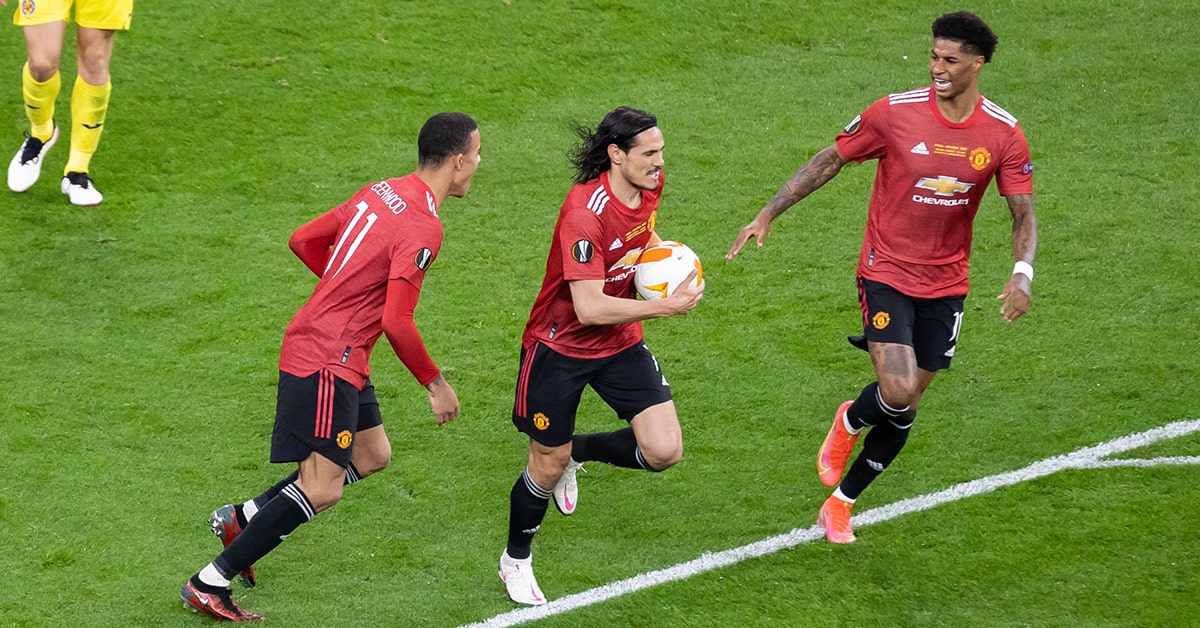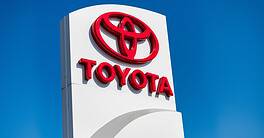While US sports deals are few and far between, investors have a better chance to score abroad.

Nowadays, it’s common to read about superwealthy Americans going abroad to buy European football clubs. Most of them have been priced out of major sports franchise auctions in North America, where the National Basketball Association, National Football League, Major League Baseball and National Hockey League dominate.
But in Europe, there’s more room to play. “The Americanization of European sports is happening,” says Laurie Pinto, a veteran financier with more than 30 years of M&A expertise who spent the past decade devoted almost entirely to sports. “The price of sports teams continues to go up in the US, so they look across at Europe where it’s cheaper.” Recall how billionaire Dan Snyder bought the NFL’s Washington Commanders (née Redskins) in 1999 for $800 million. That was a record price for a US sports franchise at the time.
Today, Bank of America is shopping around the team. Forbes estimates that the price tag could be more than $5 billion, making it the sixth most-valuable team in the NFL.
Compare that to the recent deals from DuPont family member John Textor. Through his Eagle Football Holdings, the US-based investor recently acquired OL Groupe from French film company Pathé, Chinese investment fund IDG Capital, as well as part of Jean-Michel Aulas’ family holding, Holnest, for roughly €800 million ($805 million).
Textor now holds a 90% stake in Olympique Lyon, a majority stake in Brazilian team Botafogo (for an estimated $60 million), an 18% stake in Crystal Palace FC for £87.5 million (about $102.6 million) and Belgian second-tier club, RWD Molenbeek.

The further down the tiers one goes, the cheaper the teams become. For example, Textor’s stake in Crystal Palace, a Premiere League (top-tier) team, is worth more than 48 times the £2 million that Hollywood stars Ryan Reynolds and Rob McElhenney recently paid for Wrexham AFC, a fifth-tier team. “But how long do things stay cheap?” asks Pinto. “There aren’t that many clubs out there.”
Among the loftier targets currently up for sale are the Premiere League’s Manchester United and Liverpool, valued at $4.6 billion and $4.5 billion, respectively. Chelsea, also in the Premier League, was sold to Los Angeles Dodgers owner Todd Boehly for £4.25 billion earlier this year, ending the 19-year run of Russian oligarch Roman Abramovich. And RedBird Capital Partners completed the €1.2 billion (about $1.4 million) acquisition of Associazione Calcio Milan in August.
But, according to Pinto, opportunities in the UK and Italy may be drying up. Come 2023, the deal pipeline will likely be filled with teams from other markets.
“There will be much more activity in Continental Europe—Spain, Portugal and Germany,” Pinto tells Global Finance. Earlier this year, a US consortium agreed to buy a 10% piece of German football club FC Kaiserslautern. In comparison, the co-owners of Inter Miami CF teamed up with an Ares Management partner to buy a 51% stake in Spanish soccer club Real Zaragoza.
The next major sale could be Germany’s Bundesliga. Major buyout firms—Advent, Blackstone, Bridgepoint, CVC and KKR—are circling the club and have chatted with executives from Deutsche Fussball Liga, which runs the Bundesliga, reports The Financial Times. “In Italy and the UK, the low-hanging fruit prices have gone up, so the rest of Europe looks much more attractive,” says Pinto, who has about two dozen mandates on his desk.
Big banks are playing ball, too. “George Clooney’s got nothing on me,” says Goldman Sachs managing director Gregory Carey, referring to the 2009 film Up in the Air, where the actor’s globetrotting character took pride in accumulated flight miles.
Carey heads the firm’s global sports segment and regularly jets around the globe, meeting with clients and his ever-growing team of advisers. He has worked on more than 50 active buy-side and sell-side projects, including stadium financing.
Strength and Stamina
One attraction to the sector is its stability. “Sports teams are resilient during tough times,” Carey says, noting that while volatile markets, a looming economic downturn and high-interest rates have stymied M&A activity in virtually every sector, M&A in sports is actually up. Why? The euro has tumbled against the dollar, and there’s a tremendous amount of capital flooding into sports. Dealogic documented 81 sports deals in 2022 from January to October. The total deal value hovered at around $15.13 billion, about a third directed at US-based targets. “I’m spending more time on M&A than I ever have in the past,” Carey adds.
Meanwhile, the broader M&A landscape remains quiet, as global deal activity across all sectors in the third quarter alone dropped to $722 billion. That’s a 54% decline from a year earlier, and down 38% sequentially from the second quarter.
For the year, the total deal value is expected to fall below 2020’s tally of $3.6 trillion. For the first nine months of this year, the global value of transactions reached $2.97 trillion. That is about a third lower than the same period during 2021’s record year, and roughly level with the comparable period in pre-pandemic 2019.
“Sports have stood the test of time,” comments Brian Kantarian, head of J.P. Morgan Private Bank’s sports finance group. Through every economic downturn, including the Covid-19 pandemic, there has been a direct impact on businesses, he explains, but when it comes to sports, you continue to see an upward trajectory in values. “The resilience of sports, as an asset class, has made it attractive to investors over time,” he says. “It’s not like any other corporate trophy.”
After all, there are only 32 NFL teams. They rarely change owners, and unlike European football, American football doesn’t accept private equity funds. When NFL teams sell, it is typically to a Jeff Bezos type. Bezos was rumored to be interested in the Seattle Seahawks and, more recently, the Washington Commanders. “Going abroad, there are more opportunities,” Kantarian says.
Still, there are plenty of downsides to owning a football club. One is relegation—or “the R-word,” as Pinto calls it. When managing a team like Wrexham, the goal is to rank well enough each season to get promoted from fifth to fourth, as each jump proves to be more lucrative.
Conversely, you don’t want to finish at the bottom of the league and get sent down to the division below, or “relegated.” Such a demotion takes a financial toll on player pay and club revenue, as percentages from domestic and foreign markets broadcast deals get slashed.
Genoa, for example, was relegated earlier this year from the top of Italy’s football league system, Series A. The club has had as many managers this past season—four—as games won. It also had 54 coaching changes in the past 30 years. Also in 2022, Watford suffered a 1-0 defeat by Crystal Palace and was relegated to the English Football League’s Championship division.
Buyers are even weaving relegation into their deal terms. If Real Zaragoza had gotten relegated to the third division, the financiers would have walked. When buying a franchise, it should be “for the right reasons,” and new owners should “know what they’re doing,” Pinto says.
The complexity of the space makes financing difficult. Not only is the sports sector subject to the same macro challenges as other industries—rising inflation and interest rates have influenced M&A and valuations—but debt financing acquisitions have become more costly.
Also, commercial banks are usually reluctant to lend to football clubs due to the risk involved and potential fan backlash. This opened the door for financing firms like Michael Dell’s MSD Partners, which helped back ALK Capital’s £200 million purchase of Burnley.
Firms like MSD swoop in where traditional banks tend to steer clear. Pinto explains that customers can be so passionate about the game that they might throw a tantrum and change banks if they find out their bank is lending to a rival club.
If you are fortunate to own a club, the biggest hurdle is turning a profit. According to UK consulting firm Vysyble, the total economic loss in the Premiere League, over the last 13 years, amounted to £5.2 billion. In the 2020 to 2021 season, the economic loss came in at £1.05 billion, better than the loss in 2019-2020 of £1.38 billion. There are only two instances of an economic surplus—in 2016 to 2017 (£224.4 million) and 2017 to 2018 (£31.6 million). “It is safe to conclude that this is an industry where it is difficult to generate an economic surplus,” Vysyble co-founder Roger Bell says. “And perhaps potential investors would better serve their interests if they were aware of this before they committed themselves.”



